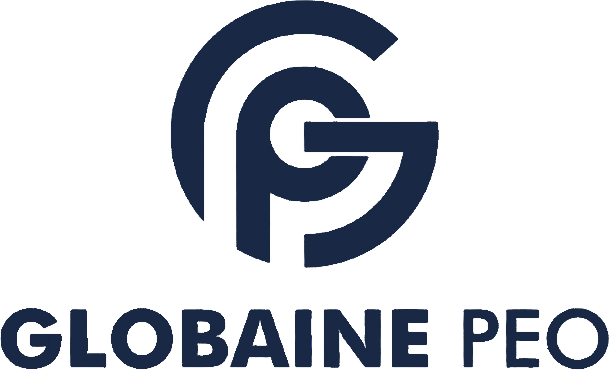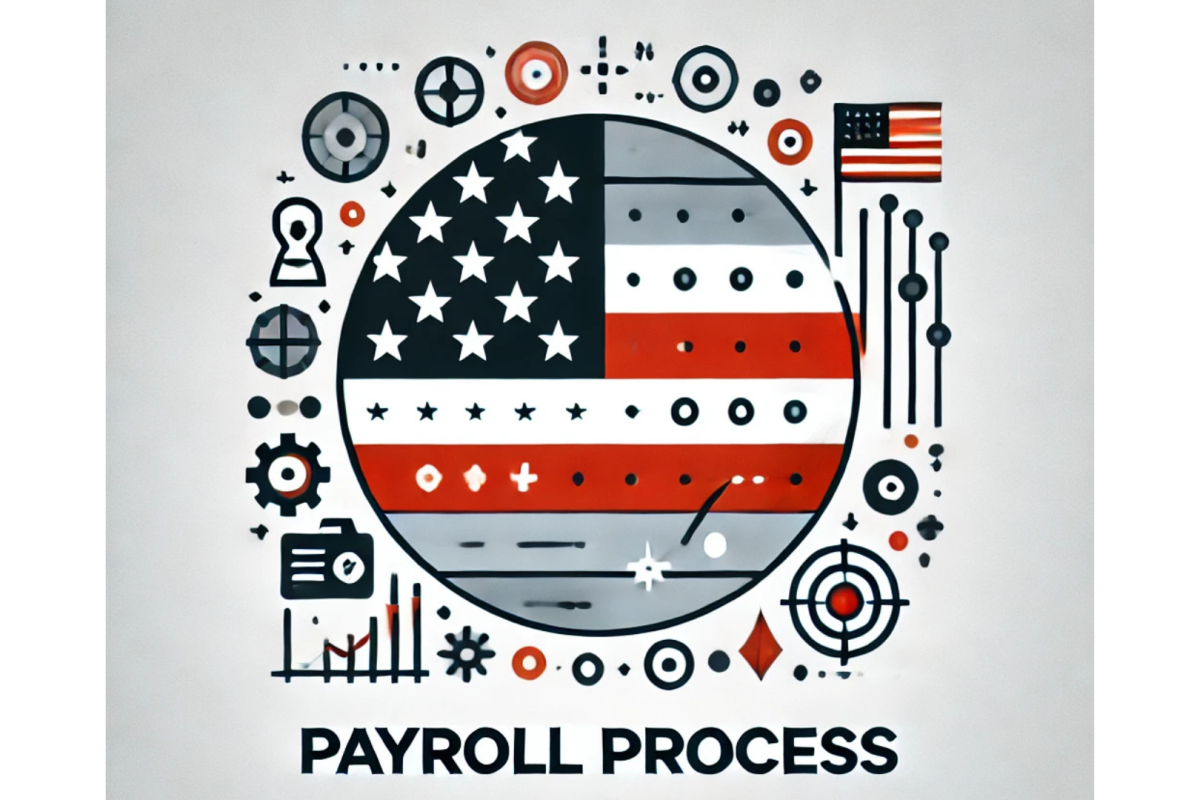Expanding into the USA offers tremendous growth opportunities for global employers, but managing payroll in the USA comes with its own set of challenges due to federal, state, and local regulations. This guide breaks down the payroll process, tax obligations, and important considerations for managing U.S. payroll effectively.
Step-by-Step Guide to Payroll in the USA
Step 1: Understanding the Salary Structure in the USA
The salary structure in the USA includes mandatory components such as wages and taxes, along with optional benefits, which may vary by employer.
| Component | Details | Mandatory/Optional |
|---|---|---|
| Base Salary | Fixed compensation for the employee’s work, as per the employment contract. | Mandatory |
| Bonuses | Performance-based or profit-sharing bonuses are common but depend on company policies. | Optional |
| Health Insurance | Many employers offer health insurance, with tax advantages for both employer and employee. | Optional (but common) |
| Retirement Benefits (401k) | Employer contributions to retirement plans such as a 401(k), providing tax benefits. | Optional |
| Meal Allowances | Can be offered as part of benefits package, with potential tax advantages for non-taxable limits. | Optional |
| Social Security Contributions | Employer and employee contribute to Social Security and Medicare as part of FICA. | Mandatory |
Outcome: Structuring salaries with mandatory contributions and optional benefits ensures compliance and competitive compensation.
Step 2: Income Tax Withholding
In the USA, employers are responsible for withholding federal income taxes, based on information provided by employees on IRS Form W-4.
| Annual Salary | Tax Rate |
|---|---|
| Up to $11,000 | 10% |
| $11,001 – $44,725 | 12% |
| $44,726 – $95,375 | 22% |
| $95,376 – $182,100 | 24% |
| Above $182,100 | 32%-37% |
Filing Requirement: Employers must submit tax withholdings to the IRS and provide employees with annual W-2 forms to report their income.
Outcome: Proper income tax withholding ensures compliance with federal tax laws, reducing penalties and fines.
Step 3: Social Security Contributions
Employers in the USA must contribute to Social Security and Medicare under the Federal Insurance Contributions Act (FICA).
| Social Security Component | Employer Contribution (%) | Employee Contribution (%) |
|---|---|---|
| Social Security (OASDI) | 6.2% | 6.2% |
| Medicare (Hospital Insurance) | 1.45% | 1.45% |
| Additional Medicare Tax | 0% | 0.9% for income above $200,000 |
Outcome: Timely and accurate contributions ensure employees are covered for retirement and medical benefits, avoiding compliance issues.
Step 4: Unemployment Insurance
Employers must contribute to both federal and state unemployment insurance funds, which provide financial assistance to workers who lose their jobs.
| Insurance Type | Contribution | Applicable Law |
|---|---|---|
| Federal Unemployment Tax Act (FUTA) | 6% on the first $7,000 of wages | Federal |
| State Unemployment Insurance (SUTA) | Varies by state | State |
Outcome: Employers must stay compliant with both federal and state unemployment insurance requirements, ensuring they file quarterly reports.
Step 5: Paid Leave
There is no federally mandated paid leave in the USA, but employers may offer it as part of their benefits package. Paid leave includes vacation time, sick leave, and parental leave, which vary by state.
| Leave Type | Details |
|---|---|
| Vacation | Often 10-15 days per year, but varies by employer. |
| Sick Leave | Some states mandate paid sick leave (e.g., California, New York). |
| Parental Leave | The Family and Medical Leave Act (FMLA) requires up to 12 weeks of unpaid leave for family needs. |
Outcome: Employers offering paid leave improve employee satisfaction and retention, while staying compliant with state-specific mandates.
Step 6: Health Insurance and Other Benefits
While health insurance is not mandated at the federal level for small businesses, the Affordable Care Act (ACA) requires employers with 50+ employees to offer health coverage.
| Benefit Type | Employer Requirement | Optional/Mandatory |
|---|---|---|
| Health Insurance | Required for companies with 50+ employees under the ACA. | Mandatory (if >50) |
| Retirement Contributions (401k) | Many employers offer matching contributions to employees’ retirement savings plans. | Optional |
| Meal Allowance | Employers can offer meal subsidies or vouchers as part of the benefits package. | Optional |
Outcome: Offering competitive health insurance and retirement benefits helps attract and retain top talent, while complying with ACA regulations.
Step 7: Payroll Compliance and Reporting
Employers in the USA are required to follow strict reporting guidelines for payroll.
| Compliance Requirement | Details |
|---|---|
| Quarterly Tax Reports | Employers must file IRS Form 941 for federal income and payroll taxes. |
| W-2 Forms | Must be provided to employees by January 31, detailing their annual earnings and taxes withheld. |
| Record-Keeping | Employers must retain payroll records for at least three years for audit purposes. |
Outcome: Following payroll compliance and reporting guidelines avoids legal issues and keeps payroll processes running smoothly.
Step 8: Payroll for Remote Workers
For remote workers, payroll compliance may vary depending on where the employee resides and works.
| Remote Worker Consideration | Details |
|---|---|
| Tax Residency | Employees may be subject to state income taxes based on their physical location. |
| Social Security Contributions | Remote workers are still subject to FICA contributions. |
Outcome: Accurately managing payroll for remote workers avoids compliance problems across different state tax jurisdictions.
Conclusion: How GlobainePEO Can Help with Payroll in the USA 🌐
GlobainePEO, as your Employer of Record (EOR), ensures compliance with U.S. payroll regulations, managing tax withholdings, social security contributions, and employee benefits. By partnering with GlobainePEO, global employers can focus on growing their business while we handle the complexities of U.S. payroll.

